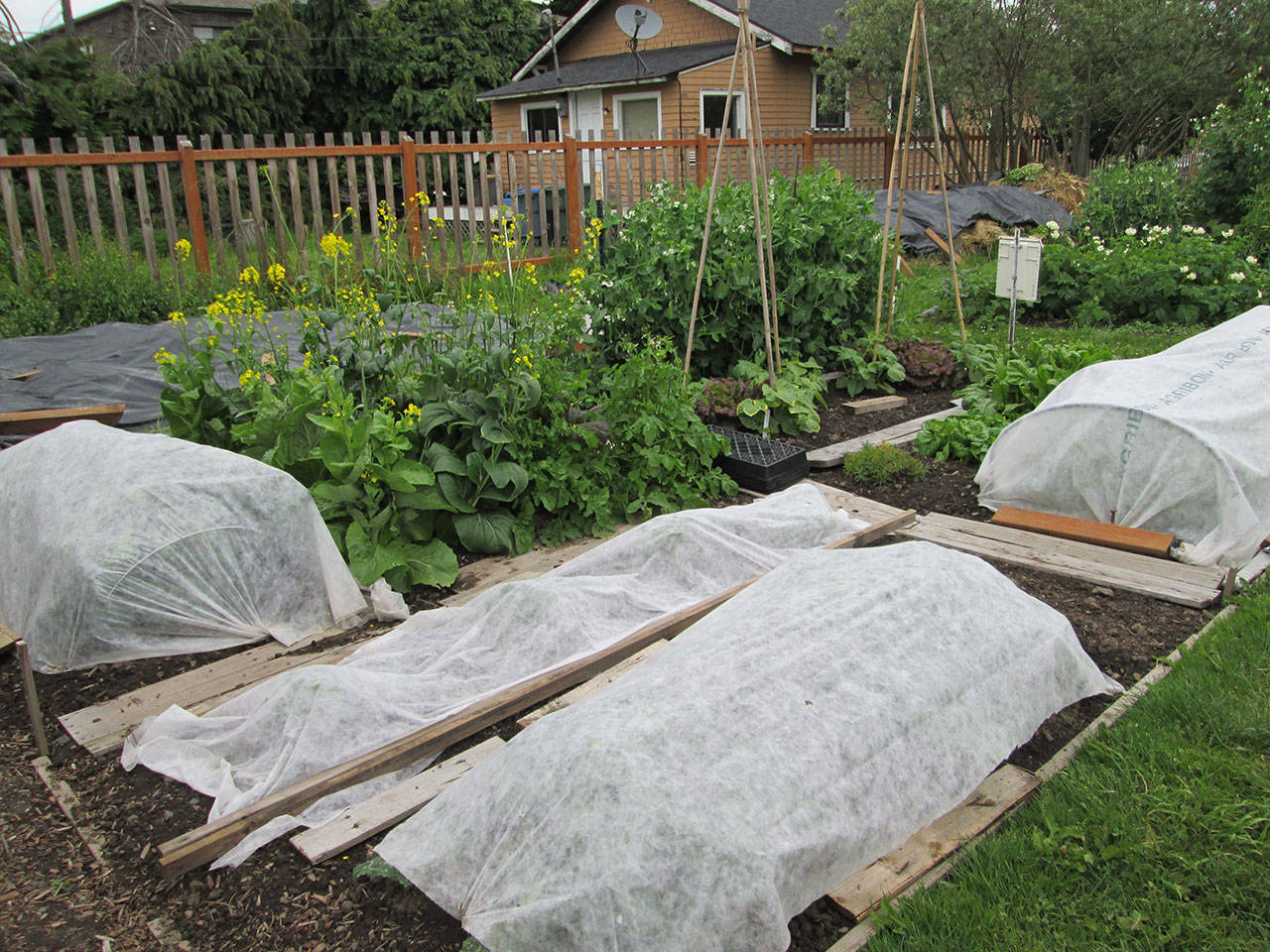For many areas of the country, harvesting the last summer vegetables from the garden can be a gloomy time of the year. It means winter is coming and it’s time to put the garden to bed. Luckily, we live in an area where we can enjoy a garden year around.
Now (in the middle of summer) is the time to begin planning for and planting that fall/winter vegetable garden!
Vegetable varieties, timing
Key to a fall or winter garden is planting the right crops. Select vegetables and varieties that are well-suited to shorter days and cooler temperatures. They tend to be the same crops that you planted early in the spring including leafy green vegetables, root crops and cole crops (such as broccoli, kale and cabbage). Realize that even among the cool-weather crops, some varieties perform better in fall and winter than others. (See sidebar on B2)
Timing is everything! You need to plant your fall/winter garden late enough so that crops will not mature during the warm summer months, but soon enough so that plants are well-established (if overwintering) or producing (if planted for a fall crop) before the weather turns cold.
The time to plant depends on the crop/variety and its days to maturation. Sow slower-growing vegetables such as broccoli, cabbage, carrots, cauliflower, onions and peas by mid-July and faster-growing Asian mustards, beets, chard, kale, radishes and spinach toward the end of month. Quick growing arugula, lettuce and radishes can be planted in August (and sometimes even in September).
Crops that have not matured before the weather turns too cold often can be overwintered. The plants go dormant but start growing again when temperatures warm in late winter, providing one of the earliest spring harvests possible.
Good crops for overwintering include arugula, bunching onions, kale, spinach, Swiss chard and selected lettuce varieties. Sprouting broccoli requires a cold treatment before making sprouts and specifically is planted for overwintering.
Overwintered crops sometimes need protection from the rain which can saturate the soil, encourage slugs, and create conditions favorable for leaf diseases.
Selecting the best site
Plant vegetables in the sunniest and warmest place on your property, often a south-facing plot or against a building that will block the wind. Keep in mind that the position of the sun will cast different shadows as it shifts during the changing seasons.
Also, make sure that the soil at the planting site drains well. If you have heavy clay soils, fall and winter rains can suffocate roots leading to poor growth. Amend heavy soil with compost to optimize drainage and restore nutrients that may have been depleted by summer crops.
Keeping warm
Most plants, even those listed above, slow their growth when temperatures reach 40 degrees. Crop covers can increase air temperatures by 4-5 degrees and keep the plant growing for longer. Covers also protect crops from winter rain and wind.
Three inexpensive ways to keep your plants warm are cloches, cold frames and low tunnels. All rely on the sun as their sole source of heat.
Cloches are coverings that are usually used for individual plants. Materials such as plastic milk jugs, plastic soda bottles and glass jugs can be used to warm plants. Simply remove one end of the container and place it over the plant.
Cold frames are boxes made out of wood or cinder blocks that are sunken in the ground and have a window-like covering that allows venting and light penetration. The size of the cold frame depends on the amount of available space and the crop.
Low tunnels are structures that cover an existing planting of vegetables. Tunnel supports can be made out of PVC or wire hoops. Clear plastic or woven fabric (such as floating row cover) is then stretched over the hoops to enclose the plants. Light is able to penetrate the covering while also trapping heat inside the structure.
In addition to the above season-extending covers, lightweight floating row cover, made of spun-bonded polypropylene, can be placed directly on your plants to provide light frost protection. (See photo.)
Our climate is great for fall and winter vegetable gardening. But begin planning now so you are able to enjoy fresh vegetables well into the winter season.
Lorrie Hamilton was the Clallam County Master Gardener Coordinator from to 2014-2018.


